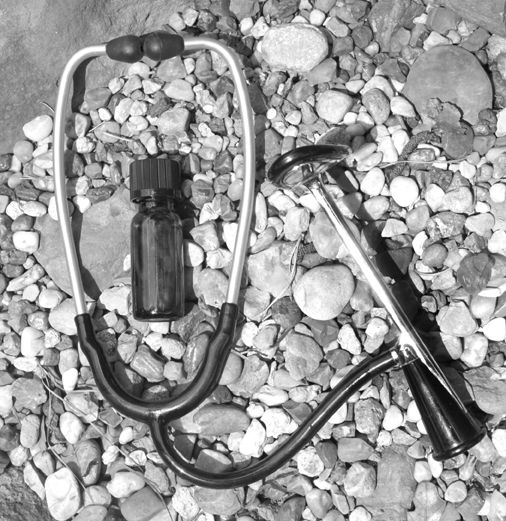
Essential Oils
Ashley loves to use essential oils in her practice as well as her personal life. She has an extensive collection as well as many essential oil reference books to draw from. She is passionate about educating others desiring a more naturally healthy lifestyle using essential oils.
Ashley's doTERRA Website:
Current Class Registration:

Custom Essential Oil Kits for Birth Workers
Designed by Ashley
The links below create a custom shopping cart for you with Ashley's most common recommendations for birth workers. You can customize your kit by adding or deleting any of the items in your cart.
All of the kits below include a FREE wholesale account for one year, so all your future orders are 25% off retail prices. If you order the recommended kit or the ultimate kit, you can also choose a FREE gift of either toothpaste, a diffuser, or hand wash (Ashley recommends choosing the diffuser).
Attend a class with Ashley or schedule a one-on-one call to review how you can use these essential oils to best support your laboring clients.
Birth Worker Basic EO Kit
This kit has a basic selection of oils and blends to help support a laboring client with aromatherapy. This is a great starter kit for doulas or moms-to-be. It includes Peppermint, Lemon, Clary Sage, Serenity blend, and Deep Blue Rub packets.
Birth Worker Recommended EO Kit
This kit has Ashley's most recommended oils for birth workers. Lemon, Peppermint, Jasmine, Clary Sage, Wild Orange, Helicrysum, Serenity blend, Balance blend, and Deep Blue Rub packets. This kit has just about anything you could need to support a laboring client.
Birth Worker Ultimate EO Kit
This is the mother of all birth worker kits for aromatherapy support. This kit includes everything in the recommended list and adds Ylang ylang, Lavender, and Myrrh. Plus, Jasmine and Helichrysum are in regular oil bottles, and Deep Blue Rub is a full tube rather than packets.
Frequently Asked Questions
What is an Essential Oil?
An essential oil is a group of chemical constituents that are volatile (meaning they can evaporate and be distilled), oil soluble (meaning they will dissolve in or combine with oils and other lipids), and are found in all or part of one of many differentaromatic plants. These constituents are created by plants for immune defense, pollinator attraction, damaged tissue healing, and other metabolic purposes within the plant.
What is Aromatherapy?
Essential oils typically contain several aromatic constituents that create different aromas that we can smell. Because of this property, essential oils have long been used to create perfumes, colognes, and other products that stimulate our sense of smell. Because our sense of smell is closely tied to the memory, emotional, and stress-response centers of our brain, the aromas of many essential oils can have a profound impact on these areas of our lives. This use of essential oils is commonly known as aromatherapy.
Are There Other Uses for Essential Oils?
In more recent times, it has become known that many essential oils can do more than just stimulate our olfactory system (the part of the brain responsible for processing smells). Besides the aromatic constituents, a single essential oil can actually be a complex mixture of hundreds of different chemical constituents. Many of these chemical constituents have demonstrated properties in scientific research studies such as antioxidant, stress relieving, and many more. Because of these many different properties, essential oils are used not only aromatically but also topically (applied directly to the skin) and even internally to help support the body's natural health mechanisms in many different ways. Note: not all essential oils are safe for internal consumption. When in doubt, ask the manufacturer.
How Do We Get Essential Oils?
Pure essential oils are traditionally extracted from all or part of an aromatic plant through steam distillation (or in the case of citrus oils, by pressing them from the peel). Skilled distillers are careful to use only the best, most natural plants, harvested at the correct time, and distilled in the proper way to ensure the correct balance of chemical constituents in the final, pure oil. Be certain to ensure that you use only the purest, natually-derived essential oils for any kind of therapeutic use. Avoid any oils extracted using chemical solvents or that contain any synthetic chemicals not found in a true essential oil. It is difficult for consumers to know if an essential oil contains any synthetic material or potentially harmful substances (such as pesticides), so it is important to trust the company you purchase them from. A general rule of thumb is that if all the oils a company sells are priced about the same, then they are not pure, therapeutic grade essential oils. Chances are they are synthetic as pure essential oils range greatly in price according to the type of oil, source, and sometimes even the time of year.
How Do I Use Essential Oils?
Aromatic - the simplest way to use essential oils aromatically is to just inhale the aroma of the oil. This can be done directly from the bottle or by dropping 1 or 2 drops into your hands and cupping the hands over the nose and mouth while inhaling. For continuous aromatic use, use an aromatherapy diffuser to disperse the essential oil into the air.
Topical - topical application refers to placing the essential oil directly on the skin, hair, mouth, nails, or other parts of the body. Many essential oils can be applied undiluted (also called "neat") for concentrated use on a small part of the body. Alternatively, they can be combined with a "carrier oil" (a vegetable or nut oil) to cover a large area of the body or to dilute the concentration of the essential oil for young or sensitive skin. Common ways to use essential oils topically include direct application, massage (when diluted with a carrier oil), compress, in a bath, or combined with other therapies such as reflexology or acupuncture.
Internal - many essential oils are safe to be taken internally by most adults, while some should be avoided. If the manufacturer of an essential oil specifically states that oil can be consumed internally, it can be taken internally as indicated on the label. Remember, less is more with essential oils. Usually one or two drops is enough. If the bottle doesn't list internal use information, then internal use should be avoided unless approved by a certified health care professional. Some common ways to take essential oils internally include placing drops in an empty capsule and immediately swallowing, placing drops in a beverage before drinking, and diluting with a carrier oil then inserted either vaginally or rectally with a syringe, inside capsules, or applied on a tampon.
What is the Quality of the Essential Oils Ashley Recommends?
Ashley insists on using only the finest quality, therapeutic-grade, pure essential oils available. These oils are Certified Organic, Organic (same as certified organic except not certified), Wild Crafted (self-propagating, uncultivated, grown and harvested by hand in the wild), and ethically farmed essential oils. All of the oils are GC/MS analyzed and certified to be pesticide free. These essential oils far exceed AFNOR and ISO quality standards and are subjected to rigorous mass spectrometry and gas chromatography testing to ensure exact composition and activity. Ashley believes these oils are among the safest and most beneficial essential oils available.
All of the essential oils are GC/MS analyzed for quality assurance and meet strict aroma and analytical requirements before they are accepted for purchase. Analysis of Gas Chromatographs (GC) provides valuable information about the nature of the pure essential oils that are purchased from around the world. GC's usually vary from batch to batch due to climate conditions and location in which the plant was grown and harvested. While it is recognized that conditions and GC's may vary, there is a standard of value that each oil must meet to pass the "test" of highest quality and effectiveness.
The aroma and/or appearance of essential oils may vary with each re-order. It cannot be guaranteed that the product you order today will look and smell exactly like the one you ordered previously or like the one you ordered from another supplier. All "natural" products come from nature, and there is no standardization (although the term "natural" is not currently recognized in the U.S. by any regulatory entity). This variety is what makes essential oils so effective.
The products are stored in a climate controlled environment 24/7. All of the products are fresh, and stock is replenished with regularity as needed.